By Mark Ellis –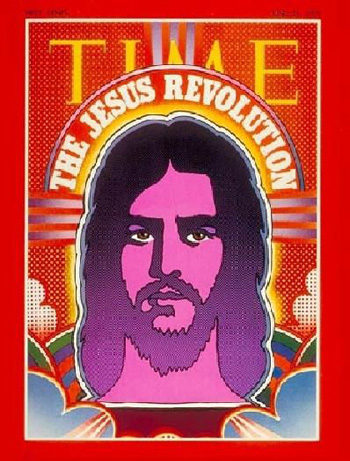
They called it the Big House, a large ranch house in Novato, California, situated on a former egg farm, where four hippie couples set their careers aside to live together with their children at the height of the Sixties.
Evangelist Lonnie Frisbee crashed on their living room floor during the formative months of his early Christian life and grew under their influence, before he joined Pastor Chuck Smith and rode the wave of the Spirit in Southern California.
Steve and Sandi Heefner were influential in getting the four couples together. Steve, a disc jockey, landed in the Bay Area with his wife in 1965. “We moved a lot, every year, because of radio, to get to a bigger market,” he notes.
They settled in Sausalito and began reaching out to make friends. Sandi went to a Newcomer’s Club put on by the city and met Liz Wise, who appeared “exotic.”
Sandi, a nominal Roman Catholic, planned a dinner party with Liz and her husband Ted, a former agnostic who had recently become a Christian. Sandy also invited Jim and Judy Doop, grade school friends from the East Bay. The three couples hit it off in a spectacular fashion.
Once they got to know each other, Ted and Liz invited friends from Berkeley, Danny and Sandy Sands, into their group.
“This was not an accumulation of Christians wanting something to happen, we were just friends trying to get to know each other,” Sandy notes.
Ted Wise had recently been tripping on LSD, trying to figure out what to do with his life, when he met Jesus Christ and was born again. Some credit Ted as being the first convert of the Jesus People Movement.
“Ted began to talk about putting something together that would further Jesus Christ into ordinary lives,” Sandi recalls. “We started discussing this thing and decided we would have potlucks together.” Then the idea progressed to finding a house where they could live together – including the seven young children between them.
Sandi was initially wary about communal living, but Ted and the others were swept up in the enthusiasm of “what was happening at the time.”
“I was not for it,” Sandi admits. But then she had an unusual experience that changed her thinking and renewed her faith.
“Steve and I were having a lot of marital problems and were not getting along,” she recalls. “Our arguments and differences were becoming public.”
A sign in the night sky
One weekend Steve and Sandi decided they would go camping together along the coast. They couldn’t seem to find the right campsite and stopped at a hamburger stand, where the couple began arguing in public.
“That night I was so pissed I didn’t even put my sleeping bag near him. I was crying to the Lord. I knew my marriage was dissolving.”
As Sandi looked up at the night sky, she saw an unusual formation of stars she had never seen before. “I saw a huge figure-eight made out of stars.”
She recognized it as a sign from God, that “He is contacting me and I’m supposed to be the eighth member of this community. I knew that was his signal to me personally and I understood I was called. But I was way out of my element as a Roman Catholic,” she says.
As far as they knew, they were the first Christian hippie community in northern California. “We were the first one I had heard of, of real families with small children and careers, dropping everything to become an evangelical arm.”
“They gave up everything, sold everything and moved in together,” Connie Frisbee recalls. “Many people think this is where the explosion happened. I find this story about these four couples as big as the story about Lonnie, because these people were in their twenties and had jobs. They had lives that were already moving in a direction.
“It would be like coming to me after I worked at UPS for 10 years and had kids and saying quit your job, take your kids and move in with these other four couples, sell everything you have and just keep what you need to function as one unit. That was an enormous sacrifice.”
“They decided to live like the Book of Acts,” she adds. Some referred to their commune as the House of Acts.
People in the neighborhood began to notice. “The word got out in Novato that there was a hippie community so we attracted all the teenagers from Novato,” Sandi says. “So every day after school there would be a bunch of kids sitting in our living room wanting to know what was happening. There was magic in the air. We witnessed to them about Jesus. On Friday nights the house was jammed with teens, the Lord brought the crowd. Many souls were harvested.”
As the four couples and their children settled into the Big House in 1967, an unusual social phenomenon was taking place that summer in San Francisco. Thousands of young people in hippie attire were converging on the city’s Haight Ashbury district.
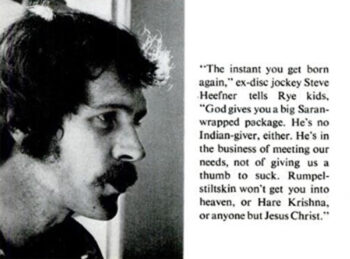
“We started taking donuts on a Friday night into San Francisco because so many kids were coming into town,” Steve recounts. It turned into street conversations, with the couples witnessing for Christ.
The need was so great, they decided to set up a mission in the city that became known as The Living Room. “The Living Room was a little storefront,” Connie Frisbee recalls. “It was one block down off Haight on Page in what is called the Panhandle.” Several churches in the area provided support to help them get started.
The four women in the Big House made a huge batch of soup using a baby bottle sterilizer and the men carried it into the city in the morning and it was given away for free. “People would come in and chat and have soup. One day Charles Manson came through and that was rattling. He was just a weird kid that came to lunch.”
“You never knew when you woke up that morning where God was going to send you to
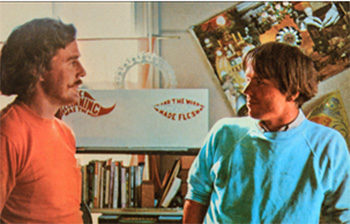
minister that day,” Sandi says. Sometimes they would go to Market Street or Golden Gate Park to spread the Gospel. They would go out wherever God was leading them for the day, in twos or threes.
When the men returned to the house from their daily outreach in the city they always had extra guests with them. The guests could stay for several days. “Every night there was a meal laid out of homemade breads and chicken enchiladas and vegetables. We brought as many people to the house as we could and witness to them,” Connie Frisbee recounts. Much of the food was donated by local stores.
“We would sit around in the evening and read the Bible, play conga drums, beat on books or maracas and worship the Lord that way. We would talk about our day with the Holy Spirit. Had God given anybody any insights? Did they read something in the Bible they didn’t understand? We would discuss and come to a better understanding of it.
“There wasn’t a set pattern. It wasn’t like every Sunday we do this. It wasn’t like that. It was really moving in the Spirit. We saw so many miracles and so many coincidences. We just knew God was doing stuff in our lives all the time.”
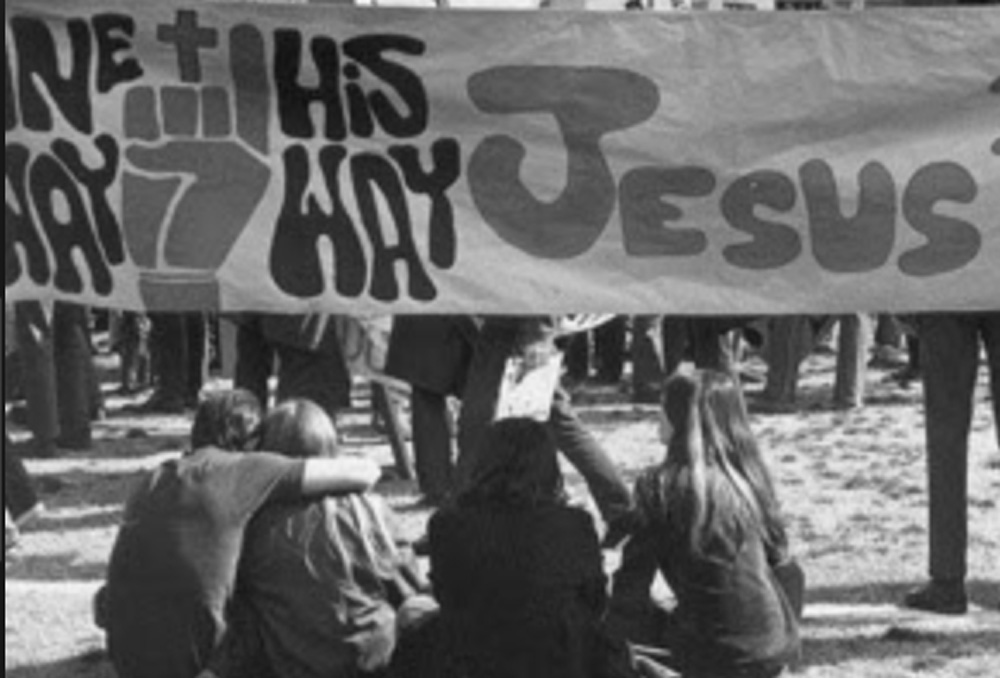 The kids they invited to stay were rough around the edges. “Some had not bathed, but covered it with patchouli oil. I can’t stand the smell of it. Every sleeping bag and towel reeked of that oil,” Sandi recounts.
The kids they invited to stay were rough around the edges. “Some had not bathed, but covered it with patchouli oil. I can’t stand the smell of it. Every sleeping bag and towel reeked of that oil,” Sandi recounts.
With four couples, seven children, plus additional guests, there were usually 20 mouths to feed every night. “We had these extra kids coming and had no income at the time. We were living on the graciousness of our Father.”
“Some of the men would get painting jobs,” Connie Frisbee recalls. “One was a cigarette salesman. Ted Wise was a sail maker. Steve Heefner was a disc jockey but lost his job because he told people he accepted Jesus as his Lord and Savior.”
Steve and another one of the men made $20 a week sweeping a church. “We could count on $20 a week for food,” Sandi notes. “We had a communal moneybox on the wall in the kitchen. If you got any money you put it in, and if you needed any you took it out. All four families lived on that little box. For a year and a half we never knew how we were going to be fed that day and God never missed a meal.”
The couples had surprisingly little conflict. “We were so busy evangelizing there was no time for minor skirmishes,” Sandi says.
The largest bedroom in the House of Acts was given to the children. “All seven children were in one bedroom. My son was out of his gourd he was so excited. The room was trashed almost every day. We asked who did this? They would all point to someone else, so you would have six different versions of who did it. The kids loved it. But we were working all the time.”
Lonnie Frisbee arrives
Steve met Lonnie Frisbee in Haight Ashbury walking down the street. At the time, Lonnie was attending the San Francisco School of Art. “Lonnie was a spectacular character. He was an out front, open witness at that time, known on the street,” Steve says.
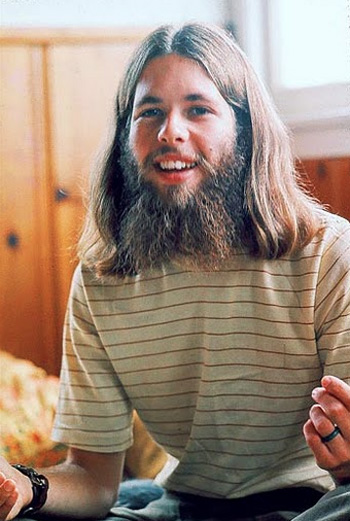
Lonnie was also a new believer that needed some help sorting out his theology. “They saw him telling people about Jesus on the streets, but he had flying saucers mixed in with the presentation of Jesus,” Connie Frisbee recalls. “They ministered to Lonnie and he saw the ability to be in service all the time so he moved in with them.
Lonnie began sleeping in a sleeping bag on the living room floor of the Big House. “Lonnie was very L.A. and a showbiz kid,” Sandi says. “He was out there even for us. He did spectacular things — miracles.
“Lonnie would be driving down the road and tell somebody, ‘turn at this corner, stop at the next stop.’ There would be somebody standing on the corner that he knew when he was a child. Lonnie would jump out, and the person would get saved right there on the corner.
“It happened over and over and over again. He had long hair like Jesus and wore robes. When it came to spiritual matters, Lonnie could produce. He was an extension of our community.”
Lonnie brought Connie into the Big House and she eventually became his wife. When Connie noticed all the work the women were doing she immediately started helping with the children, the laundry, and the cooking. “She was fabulous,” Sandi recalls. “I’ve never seen hunger for the word like Connie.”
Steve and Sandi went away one summer for an intensive Bible study on a farm in Ohio under the direction of Victor Paul Wierwille, the originator of The Way International.
When they returned from Ohio and Connie learned about their study of the Word, she began to follow Sandi around. “Every morning before I got out of bed she was dressed and sitting at the door of my bedroom with a paper and pencil ready for me to teach her. She followed me all day long, day after day. This went on day after day. She was waiting for me to get up and teach her. I never saw anybody with that kind of hunger for the Word.”
“As Connie and Lonnie hung around they ended up courting and marrying,” Steve adds.
When the living room of the House of Acts filled up with young people, shoulder-to-shoulder, they asked a Lutheran church nearby if they could use one of their large meeting rooms. “They allowed us access to their church every Friday night. So we had hundreds of kids come in and many got saved there,” Sandi says.
After Steve and Sandi returned from their summer away, they thought their community was slipping into legalism. One of the women living with them had a heavy cigarette problem. “The community decided that since she had a problem nobody could come in who had any cigarettes on them. We knew it was wrong, not based on the Word.”
After living in the Big House for 18 months, Steve and Sandi began to seek God about leaving. They were the first couple to depart. “I know some people think we broke it up by being the first to leave, but in reality it was legalism that broke it up,” she says.
Looking back, they recognize they were at the forefront of the Jesus movement – the first to catch the wave. “We had to be among the first. I didn’t realize as a Catholic there was such a thing as revivals. I wasn’t looking for it. I didn’t recognize it when we were in living it. But years later I looked back and realized we were at the cusp of a revolution and revival.”
The other couples stayed in the house for a while, then went back to their own lives again. “We continued to minister and cooperate with each other,” Sandi says.
“We never stopped ministering and continued Bible Studies in our home. I think the country is ready for another revival. I’m hoping I get to see it. I would love to see it come back to the United States.
“We had no idea what we were doing. All we know is that we loved the Lord. Every time we got up in the morning we had no idea what he had in store for us that day.”




Same movement was sweeping across New Zealand at the same time. Lots of hippies came to Christ. I only ever met two of them and did not understand what was going on and no one told me. It was another 4-5 years before I met Jesus then got saved. A wonderful sovereign move of the Good Shepherd sweeping all the lost young people (many on drugs) into His arms as a shepherd does his lost sheep. Some great preachers came out of that move.
Comments are closed.